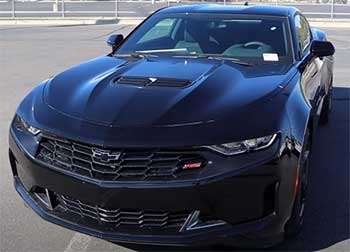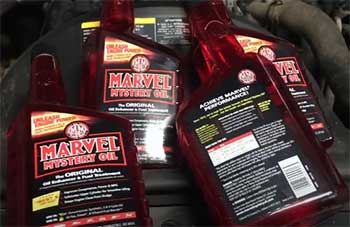If you’ve got a need for speed and an eye for muscle cars, there’s a good chance the Chevrolet Camaro is high on your list of potential purchases.
Available in a variety of trims and engine configurations, the Camaro’s most popular choices are the V6 and V8 variants. But a significant factor to consider before purchasing either model is the cost of insuring them.
Let’s dive into the details of Camaro V6 and V8 insurance to help you make an informed decision.
A Brief Comparison Table
| Feature | Camaro V6 | Camaro V8 |
| Engine Size | 3.6L | 6.2L |
| Horsepower | 335 HP | 455 HP |
| Torque | 284 lb-ft | 455 lb-ft |
| Fuel Economy (City/Highway) | 19/29 MPG | 16/27 MPG |
| 0-60 mph Acceleration | 5.1 seconds | 4.0 seconds |
| Handling | Slightly better in corners due to lighter front end | Superior on straightaways due to heavier front end |
| Price (MSRP) | Lower | Higher |
| Insurance Cost | Lower | Higher |
Pros and Cons of Insuring a Camaro V6

- Pros
The Camaro V6 offers the right balance between performance and affordability. One of its main advantages is the comparatively lower insurance costs. Generally, insurance providers consider the V6 less risky, thanks to its less potent engine.
Reduced horsepower means reduced potential for high-speed mishaps, which ultimately translates to a lower risk factor for insurance companies.
- Cons
On the flip side, even though a V6 engine equates to lower premiums, the insurance cost for any sports car, including the Camaro V6, will still be higher than that of a regular sedan or SUV.
Factors such as higher repair costs, the car’s attractiveness to thieves, and the typical driving behavior of sports car owners often lead to increased insurance rates.
Also Read: EG Assurance Reviews.
Pros and Cons of Insuring a Camaro V8
- Pros
Moving onto the Camaro V8, you’re looking at a vehicle that offers unrivaled performance. From a sheer power perspective, the V8 is a dream for car enthusiasts, boasting superior horsepower and acceleration compared to its V6 sibling.
- Cons
However, this increased power comes at a cost. V8 models typically command higher insurance rates. The increased horsepower and speed capabilities of the V8 mean a higher risk factor, leading to increased premiums.
Additionally, the V8’s enhanced performance and allure can also make it more attractive to potential thieves, further driving up insurance costs.

Let’s crunch some numbers to get a better perspective.
For a new driver in their early 20s, the average cost to insure a V6 Camaro could be anywhere from $2,500 to $3,000 per year, depending on their driving history and location.
However, the same driver would likely pay between $3,000 and $3,500 annually to insure a Camaro V8.
Teen drivers, often seen as high risk by insurance providers, face steeper premiums. A 19-year-old driver could expect to pay approximately $3,500 to $4,000 per year for a Camaro V6 and around $4,500 for a V8 model.
For 16-year-olds, it’s even higher, typically ranging from $4,000 to $4,500 for a V6 and $5,000+ for a V8.
Key Differences Between Camaro V6 and V8
Although both V6 and V8 models of the Camaro offer an exhilarating driving experience, there are several key differences between the two that can influence a buyer’s decision.
- Power and Performance
Arguably the most notable difference between the two models is their power outputs. The Camaro V6 uses a 3.6L engine that churns out an impressive 335 horsepower and 284 lb-ft of torque.
While this is plenty of power for most drivers, it pales in comparison to the raw strength of the V8.
The Camaro V8, with its 6.2L engine, boasts a massive 455 horsepower and 455 lb-ft of torque. This power differential means that the V8 can offer significantly faster acceleration and top speeds.
However, the added power of the V8 also contributes to its higher insurance premiums, as insurers often associate higher speeds with increased accident risk.
- Fuel Economy
Another significant difference between the two models is their fuel economy. The V6, with its smaller engine, is more fuel-efficient than the V8. The V6 Camaro offers an EPA estimated 19 MPG in the city and 29 MPG on the highway.
On the other hand, the V8’s larger, more powerful engine uses more fuel, resulting in an EPA estimated 16 MPG in the city and 27 MPG on the highway.
- Ride and Handling
Both the Camaro V6 and V8 offer a comfortable ride and excellent handling. However, the weight distribution and feel of the car can differ due to the different engine sizes.
The V6’s lighter engine makes it slightly easier to handle, especially around corners, whereas the V8’s heavier front end can provide a more planted feel on straightaways.
- Price
When it comes to cost, the V6 Camaro is more budget-friendly than the V8. The V6 has a lower base price, which can also contribute to lower insurance premiums. In contrast, the V8 has a higher base price due to its superior performance and power.
Also Read: Comparison of Medjet and Global Rescue Travel Insurances.
Frequently Asked Questions (FAQ)
Insurance rates fluctuate based on numerous factors. However, for a new driver in their early 20s, they can expect to pay between $2,500 to $3,000 annually for a Camaro V6.
Yes, insurance is generally higher on a Camaro compared to more standard vehicle types, given its classification as a sports car. Factors such as increased repair costs and the car’s appeal to thieves contribute to the higher rates.
A 19-year-old can anticipate paying around $3,500 to $4,000 per year to insure a Camaro V6 and approximately $4,500 annually for a V8 model.
For a 16-year-old, insurance costs could range from $4,000 to $4,500 annually for a V6 Camaro, and they can expect to pay over $5,000 per year for a V8 model.
Wrapping Up
Deciding between the Camaro V6 and V8 comes down to weighing the thrill of raw power against the practical considerations of cost, especially insurance.
By assessing your priorities and understanding these insurance implications, you’ll be well-equipped to make the best choice for your situation.

